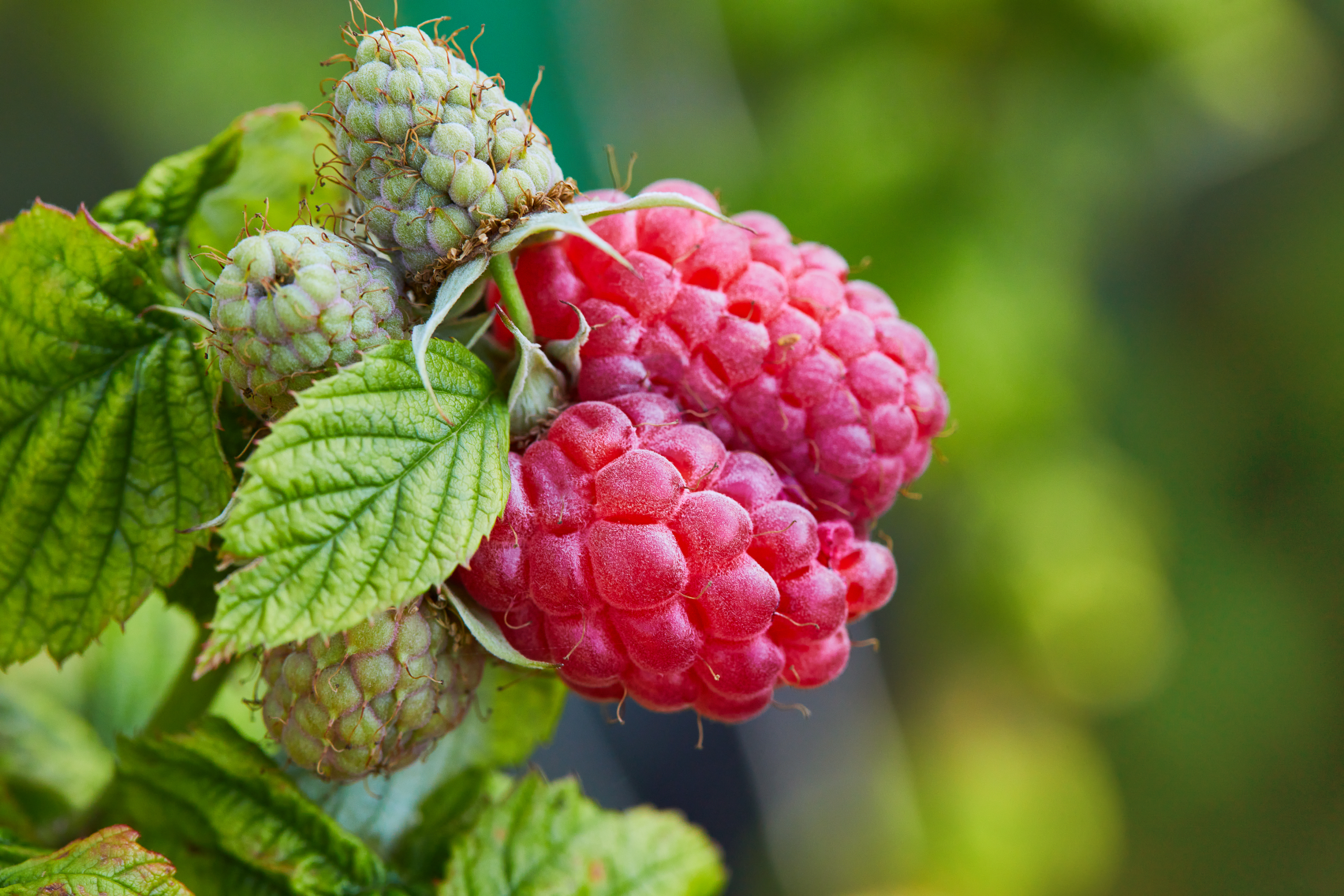Red raspberry
(Rubus idaeus)

Description
Rubus idaeus, commonly known as the raspberry plant, is a deciduous shrub that belongs to the Rosaceae family. This plant is widely grown for its sweet, edible fruit, which is consumed fresh or used in the preparation of a wide range of culinary delights. In this article, we will delve deeper into the characteristics, cultivation, and usage of this fascinating plant. Characteristics of Rubus idaeus The raspberry plant is characterized by its prickly, thorny stems that can grow up to 2.5 meters in height. The leaves are alternate and compound, with three to five leaflets, and have a serrated margin. The flowers are small, white, and form clusters at the tips of the stems. They bloom from late spring to early summer, depending on the variety. The fruit of the raspberry plant is a red or black aggregate fruit composed of many individual drupelets, which are small, fleshy, and contain a single seed. The fruits are rich in vitamins, minerals, and antioxidants, making them a healthy addition to the diet. Cultivation of Rubus idaeus Raspberry plants are easy to grow, and they thrive in a wide range of soil types and climatic conditions. They prefer a well-drained, slightly acidic soil with a pH between 5.5 and 6.5. The plants require regular watering, especially during the fruiting season, and benefit from a thick layer of organic mulch to conserve moisture and suppress weeds. Raspberry plants are propagated by vegetative means, such as suckers and cuttings. Suckers are new shoots that emerge from the base of the plant, and they can be dug up and replanted to produce new plants. Cuttings are taken from the tips of the stems in the fall or winter and planted in a rooting medium until they develop roots. There are two main types of raspberry plants: summer-bearing and fall-bearing. Summer-bearing raspberries produce fruit in the summer, while fall-bearing raspberries produce fruit in the fall. Both types require pruning to maintain their shape and productivity. Summer-bearing raspberries should be pruned after harvest, while fall-bearing raspberries should be pruned in the spring. Usage of Rubus idaeus Raspberry fruits are widely used in the culinary industry, both fresh and processed. They are used to make jams, jellies, sauces, syrups, and desserts such as pies, cakes, and ice cream. They are also used in the production of wines, liqueurs, and cordials. The leaves of the raspberry plant are also used for medicinal purposes. They contain tannins, flavonoids, and organic acids that have astringent, anti-inflammatory, and antioxidant properties. Raspberry leaf tea is a popular herbal remedy for menstrual cramps, morning sickness, and labor pains. In addition to its culinary and medicinal uses, raspberry plants also have ornamental value. The thorny stems and green foliage make them a popular choice for hedges and screens. The white flowers and red or black fruits add color and interest to gardens and landscapes. Conclusion Rubus idaeus, or the raspberry plant, is a versatile and valuable plant that offers a range of benefits. From its delicious and nutritious fruits to its medicinal properties and ornamental value, this plant has something to offer for everyone. Whether you are a home gardener or a professional farmer, the raspberry plant is an excellent choice for cultivation and enjoyment.
Taxonomic tree:







